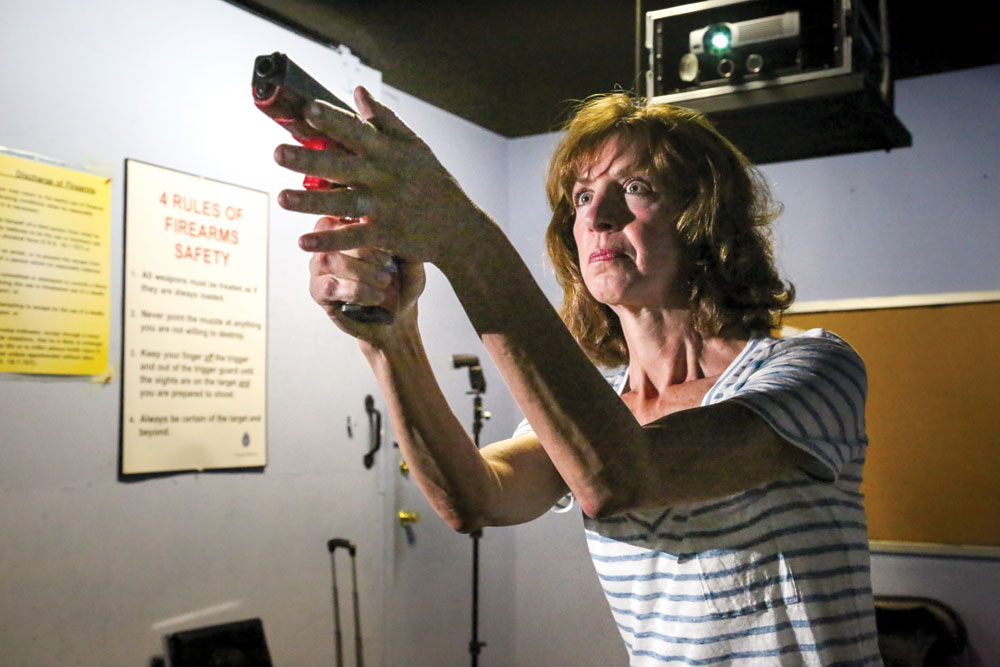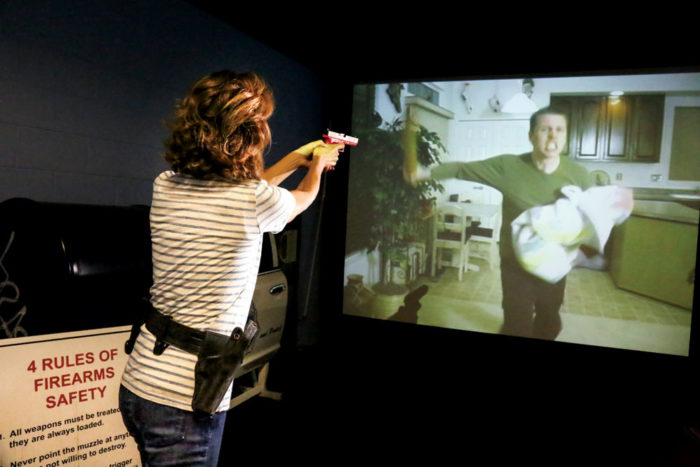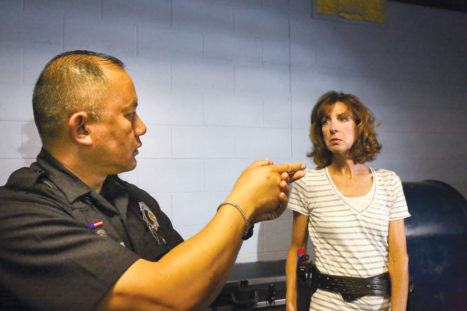
I make my way through the entrance of a warehouse where there’s been a report of an intruder. My heart races. I’ve been told, “Bad guys don’t have rules,” and that thought haunts me as I move through each doorway, hallway and open space. Then came the split-second decision whether to reach for my gun. Was my life and/or the life of others at risk?
My reaction was not what I expected. When I see the suspect, I forget every rule I’ve learned and discharge my weapon four times. I have lethally shot the intruder before he is given the chance to put up his hands and surrender.
As a 56-year-old grandmother who has had little experience with guns, I never could have imagined I would shoot a person. But in that split second, alone and facing the intruder, survival instincts took over and I overreacted. He was apparently unarmed.
I have been taught the vitally important initial assessments when responding to a call: keeping an eye on a suspect’s hands, checking for weapons, tracking the movement of friends and bystanders on the scene, evaluating escape routes for the suspect and myself, checking my footing and looking for cover. I realize how completely unaware of my daily surroundings I usually am—and trying to remember all my training seems overwhelming. If I fire my gun I will also have to articulate exactly what prompted drawing the weapon and all actions that followed.

A workplace turns violent. Careful weapon handling produces two lethal shots. The perpetrator is killed, saving the lives of several co-workers and bystanders.
One of the rules I find hardest to follow is keeping my finger off the trigger unless I plan to shoot. The belt is awkward. With all the stuff on it, a tear gas canister and a Glock 9mm or 45mm weapon, there is no comfortable way to hold my arms. My replica gun is exactly like the real thing in detail, size and weight. The only difference is that it is bright red to distinguish it from a real gun. I wonder if that’s why officers often fold their arms across their chests.
I have failed my first test in the Denver Police Department’s “Shoot … Don’t Shoot” simulation. Chalking that unfortunate performance up to nerves, I move on to the second exercise.
Each simulation exercise begins with a basic description and I must ascertain how potentially dangerous it is. Each exercise is different from the one before. I’ll be navigating through several exercises back-to-back, requiring constant vigilance.
I am reminded to use verbal warnings. Shouting at a screen does not come naturally at first, but before long I don’t hesitate to use my loudest voice. This scenario involves an armed man in a workplace. I successfully locate him and manage to fire two lethal shots.
In the third exercise, I carefully enter an open apartment door. My hand is on my weapon, but it is in my holster. I hear a noise and carefully draw the weapon holding it low, finger off the trigger. A man sits on a couch using a knife to wound an unresponsive person sprawled across his lap. When he sees me, he puts the knife down and his hands in the air. There is no need to shoot.

Hebert draws her weapon during a domestic violence simulation. Responding to a domestic violence call is potentially one of the most dangerous situations for police. In this simulation, the man was armed with a rolling pin.
I learn that domestic disturbance calls, first, then traffic stops (which are often far from routine) are the most dangerous situations for police officers.
As I go through several more simulations, I find I make faster decisions and fewer mistakes. Practice makes a big difference in my confidence, my response time and my judgment. I realize this training is important for everyone with a gun, not just law enforcement officers. Police officers are continuously trained. Private citizens who carry a weapon have to complete training. But now, remembering how my instincts led me to my first fatal mistake, I wonder if people who rarely take a refresher might be forgetting what they learned long ago.
After a morning of training, I am completely drained mentally and physically.
Denver Police Department Training
and Community Engagement
Officer Phouratsamay Chanthavong, or PC, as he’s known by his fellow officers, directs and facilitates officer training and education outreach to citizen groups. A 22-year veteran on the force now working in the Community Development Division of the department, he knows the rigors of police work well.

Officer Phouratsamay Chanthavong demonstrates the proper way to hold the gun during Front Porch writer Anne Hebert’s training session.
Appropriate and allowable rules of suspect engagement are posted on the wall at the Denver Police Academy in several places, along with signs listing the rules of weapon safety. Officers are trained to be constantly vigilant. The signs serve as a visible reminder to police trainees and seasoned officers alike. “This all becomes second nature and the behavior they practice on and off duty,” says PC.
All recruits are subjected to a psychiatric evaluation, background check and lie detector examination before they are accepted into police academy training. Checkpoints during training raise alarms about a recruit who is having difficulty or may not be psychologically suited for police work. PC adds that each recruit must spend 27 weeks training at the academy, successfully complete 14 weeks of field training supervised by a trained officer, and must complete another nine months working under the supervision of a senior officer who will continue to offer input and provide direction. At any time, a trainee can be referred back to re-training in a specific area.
PC points out a mobile simulation unit. “These units are easily transportable and take the place of the old mobile bus units.” The new mobile units can be transported in a car and are easy to set up, making simulation training for law enforcement and citizen groups much more accessible.
Reports about overly aggressive police officers and the use of force in many places in the United States have made improper law enforcement conduct a topic of national debate. Do law enforcement officers use different rules for the people they engage? PC responds that officers are trained to use the very same rules of engagement with each person they encounter. “Officers welcome using (body) cameras. While it used to be a question of the officer’s word against the citizen’s, we now have video to document the interaction.”
Officer training, including deescalation, community awareness of how officers are trained, body cameras, community engagement programs, new legislation (including some of our legislators’ bills listed on page 13)—these are all part of the complex effort to have a fairer and more just criminal justice system.



0 Comments